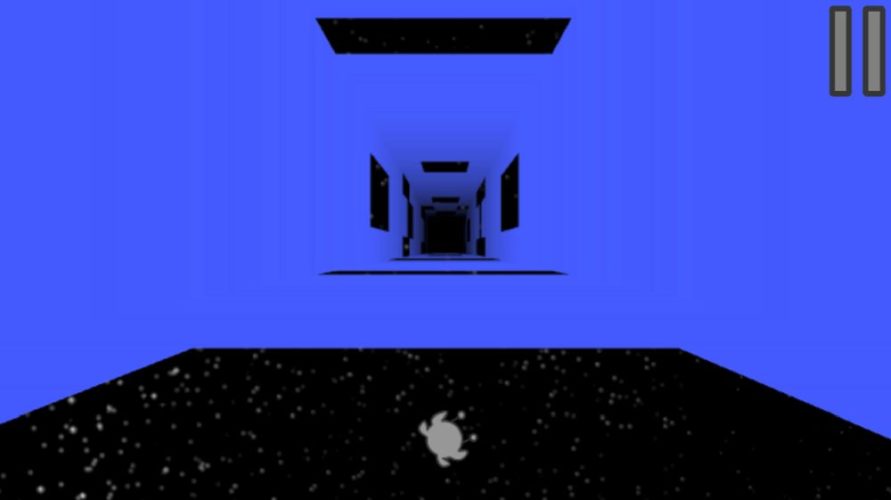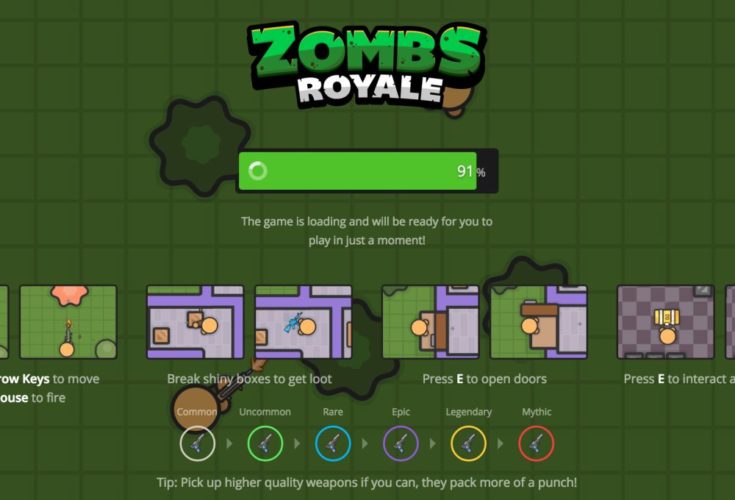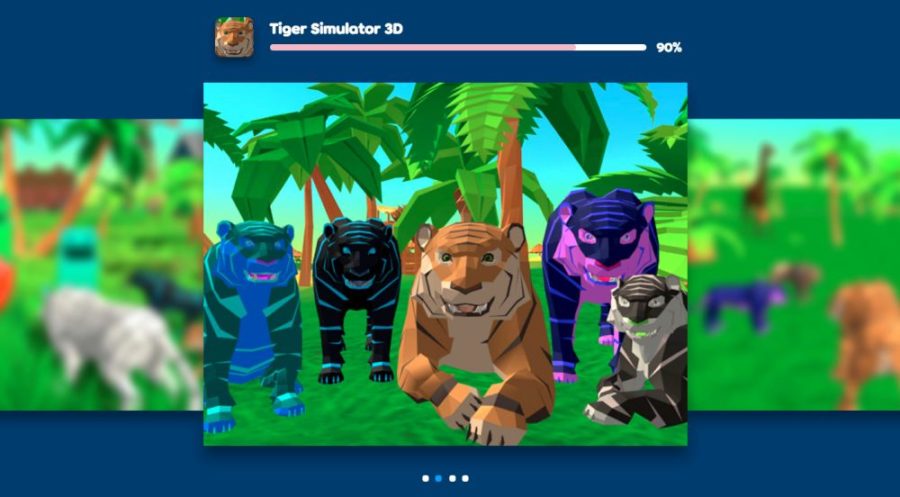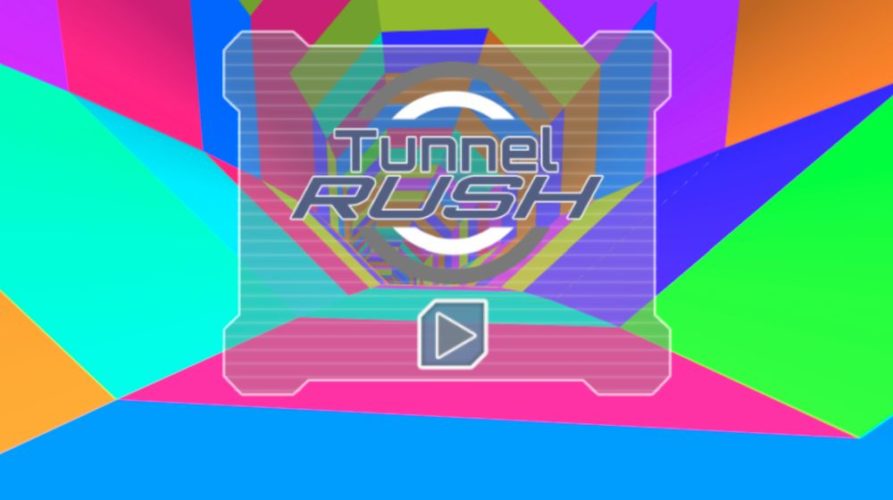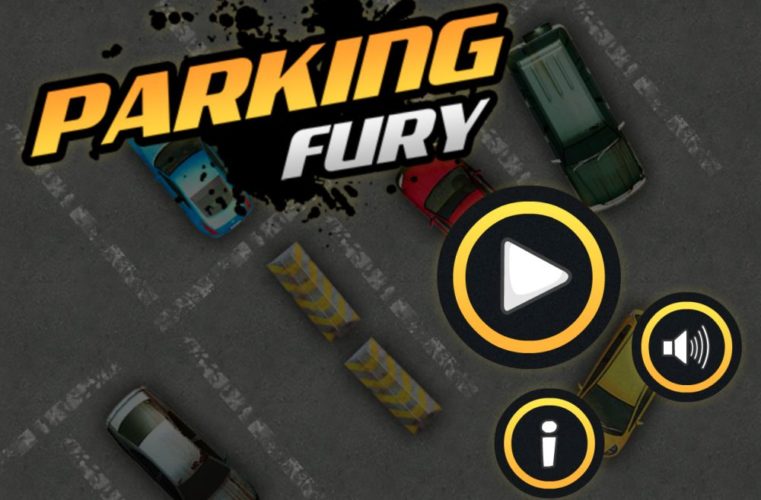Reviews & Previews
G-Switch 3 Review – Switching It Up
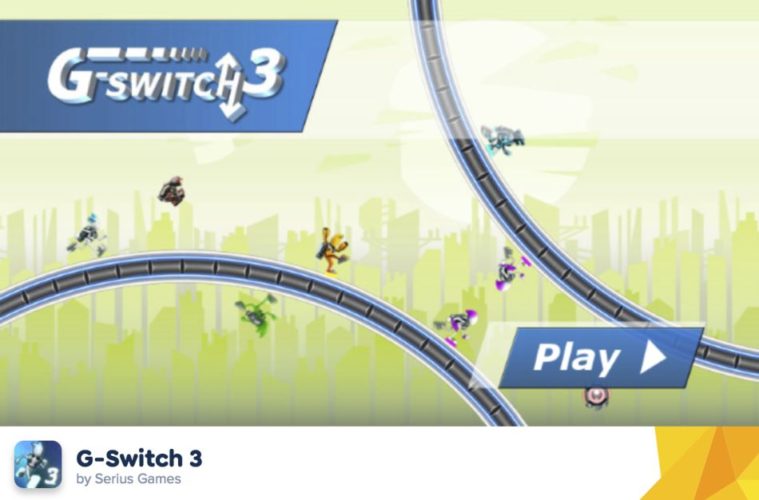
It’s difficult to imagine the gaming landscape without the humble jump. Ever since the original Donkey Kong back in 1981, gamers have been surmounting obstacles by effortlessly leaping over them, leaving barrels tumbling into the aether and enemies looking on helplessly as gravity is constantly defied by the heroic protagonist du jour. It’s not an overstatement to say that jumping is a crucial part of gaming history.
What happens, then, when we remove that ability? What happens when we create a platformer in which it’s impossible for the player to jump? Well, we’d need to replace jumping with an equally satisfying and useful mechanic; something that still allows us to get past the many obstacles in our way and performs the basic functions for which jumping is normally used. One could reasonably argue that it’s pointless to do so, but experimentation is the spice of life, and the removal of jumping has led to wonderful games like VVVVVV, Captain Toad: Treasure Tracker and Toki Tori 2.
Into this venerated landscape comes G-Switch 3, an awesome game on Poki cast in the mould of VVVVVV and sharing some mechanics with that game. G-Switch 3 is refreshingly light on narrative context; you are a person who either likes to run a lot or is being forced to do so in an effort to escape some nebulous authority or pursuer, and run you must. The game is nominally a platformer, but like our earlier examples it doesn’t have a jump button; instead, players must navigate the game’s world entirely by using a gravity-switching mechanic (the G-Switch of the title).
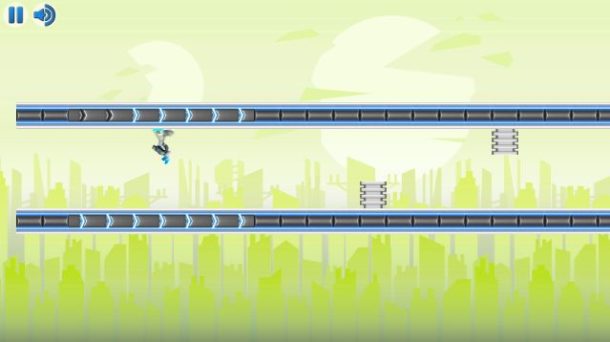
Let’s back up a little. G-Switch 3 comes to us from Portuguese indie developer Serius Games, whose previous titles include two prior G-Switch instalments and Hyper Tunnel among others. Like the previous two titles in the series, G-Switch 3 is a 2D platformer with extremely light puzzle elements and a healthy dollop of auto-running thrown in for good measure. Players are constantly running on a set of tracks, with several concurrent tracks running alongside them; pressing the space bar allows switching between the two tracks, which is the primary way of dodging obstacles and avoiding death.
You read that right: there is literally only one button in G-Switch 3, and it’s not even used for jumping. Many games would struggle to get away with such a minimalistic control scheme, especially in the age of feature-rich sandbox titles with huge amounts to see and do. G-Switch 3 is confident in its concept and execution; it knows its platforming is tight and compelling enough to reward basic skill and reflexes rather than needing to constantly distract the player with needless baubles. If you’re in the market for something that relentlessly tests your twitch reflexes and keeps you wired while you play, then G-Switch 3 is for you.
Part of how the game achieves that feeling is down to its presentation. G-Switch 3 mixes a murky neon lime backdrop with a clearly-defined track. Its aesthetic is as minimalistic as its gameplay, but the lack of visual clutter simply allows the core loop to shine through and gives each obstacle definition. How many platformers have you played in which visual sheen and trickery mean it’s actually quite difficult to differentiate between dangerous obstacles and background clutter? G-Switch 3 suffers from no such problem, and the play space is clearly defined at all times. The sound, too, is excellent; there’s only one music track, but it’s looped well, creating a constant feeling of urgent tension that escalates as the difficulty rises.
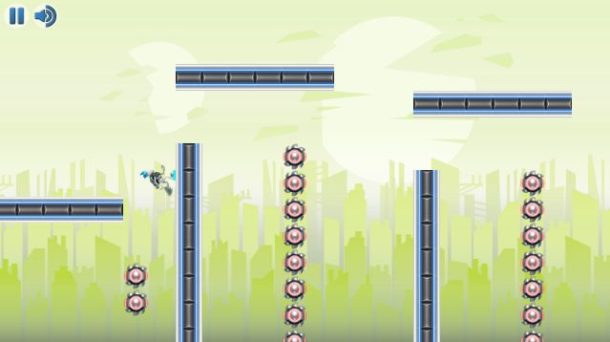
All of which brings us to G-Switch 3’s most compelling feature by far: its difficulty curve. Rarely have we played a game in which the difficulty is so perfectly tuned. G-Switch 3 wordlessly introduces its core mechanics, then immediately begins to play with them and subvert players’ expectations. Light puzzle elements are introduced in the form of guiding clones, which will switch their gravitational orientation simultaneously but must still both be guided to the finish line of each stage together, meaning players need to think about two different characters and the obstacles they face. It’s a bold decision for a mechanic that already switches up everything we know about conventional platformers, but it pays off.
Add to this some well-thought-out scenarios and genuinely mind-bending platforming challenges and G-Switch 3 looks like a very enticing proposition indeed. There are bells and whistles: there’s an endless mode for those who simply want to test their mettle and chase a high score, and there’s a multiplayer mode if you fancy getting a friend involved.
In addition to this, there are secret characters which can be unlocked through collecting optional tokens hidden throughout the game’s stages. Said characters simply add a new visual sheen to your avatar, though, and don’t impact gameplay any, so they’re just a nice bone thrown to the completionists.
All in all, G-Switch 3 is an extremely enjoyable experience. Its simplistic mechanics belie a surprisingly well-designed and structured platformer that layers challenge upon challenge without ever feeling unfair, while its excellent music and visual presentation make it a joy to behold. Give this one a try and you won’t be disappointed.
Features
Exploring Valorant eSports Stats: Unveiling the Metrics Behind Competitive Excellence

In the rapidly expanding realm of Valorant eSports, statistical analysis plays a pivotal role in understanding player performance, team dynamics, and the strategic nuances that define success in competitive play. This article delves into the significance of Valorant eSports stats, their impact on the competitive landscape, and how they empower players, teams, and fans alike.
Key Metrics in Valorant eSports Stats
Valorant eSports stats encompass a wide array of metrics that provide insights into player proficiency and team strategies. These include individual performance indicators such as kill-death ratios (K/D), average damage per round (ADR), headshot percentages, and assist counts. Team statistics such as round win percentages, first blood percentages, and economy management efficiency further illuminate strategic strengths and areas for improvement.
Analyzing Player Performance and Contribution
For professional Valorant players, statistics serve as a critical tool for evaluating individual performance and contribution to team success. By analyzing metrics like K/D ratios and ADR, players can assess their impact in securing eliminations, dealing damage, and supporting team objectives. This data-driven approach enables players to identify strengths to leverage and weaknesses to address, enhancing their overall effectiveness in competitive matches.
Strategic Insights and Adaptation
Valorant eSports stats provide valuable strategic insights that shape team tactics and gameplay adaptations. Coaches and analysts analyze statistical trends to optimize agent selections, refine map strategies, and counter opponents’ playstyles effectively. The ability to leverage data-driven decision-making empowers teams to evolve their tactics, adapt to meta-game shifts, and maintain a competitive edge in the dynamic world of Valorant eSports.
Tracking Tournament Trends and Meta-Game Evolution
Beyond individual matches, Valorant eSports stats track broader tournament trends and meta-game evolution. Historical data on agent pick rates, map preferences, and round outcomes reveal emerging strategies and meta-shifts over time. This analytical depth allows teams and analysts to anticipate trends, innovate strategies, and stay ahead of competitors in high-stakes tournaments and league play.
Fan Engagement and Spectator Experience
Valorant eSports stats enrich the spectator experience during live broadcasts and tournament coverage. Fans can follow real-time updates on player performances, compare stats across matches, and engage in discussions about standout plays and strategic decisions. Interactive platforms and statistical dashboards enhance viewer engagement, fostering a deeper connection with the competitive narratives unfolding in Valorant eSports.
Impact on eSports Betting and Fantasy Leagues
Valorant eSports stats play a crucial role in eSports betting markets and fantasy leagues, where informed decision-making hinges on statistical insights. Bettors and fantasy league participants leverage player and team stats to assess form, predict match outcomes, and manage their investments strategically. Real-time updates and comprehensive data analysis enhance the strategic depth and excitement of eSports engagement for fans worldwide.
Technological Advancements and Data Visualization
Advancements in technology have revolutionized how Valorant eSports stats are accessed and analyzed. Streaming platforms and eSports websites offer sophisticated data visualization tools, interactive heatmaps, and player performance overlays that enhance the depth and accessibility of statistical analysis. These technological innovations provide analysts, commentators, and fans with enhanced insights into gameplay dynamics and strategic decision-making.
Future Innovations in Statistic Analysis
As Valorant continues to evolve as an eSports powerhouse, the future of statistical analysis promises further innovations. AI-driven predictive analytics, enhanced machine learning algorithms, and real-time performance tracking technologies are poised to revolutionize how eSports stats are processed and utilized. These advancements will elevate the precision, depth, and predictive capabilities of statistical analysis in Valorant eSports, shaping the future of competitive gaming.
Casual
Encouraging Growth and Motivation: Resources for Child Development

Child development is a complex journey marked by critical milestones where each stride forward builds upon the foundation of the previous one. Acknowledging children’s individual needs, pediatric therapy services tailor strategies to foster physical, emotional, and cognitive growth. To support this transformative process, environments that prompt curiosity and engagement, coupled with advanced educational tools, play an instrumental role in shaping young minds. These resources, carefully selected and applied, can significantly amplify a child’s developmental trajectory. Keep reading to learn about the effective ways these tools and techniques can aid in advancing childhood milestones.
Pediatric Therapy Services: Enhancing Developmental Milestones
Pediatric therapy services support children as they reach and surpass developmental milestones. These services, often provided by skilled therapists, address various growth challenges, ensuring each child has the best possible start in life. From speech and occupational therapy to physical and behavioral interventions, these professionals tailor their approach to meet the unique needs of every young patient.
Therapists work relentlessly to motivate children, fostering an environment where milestones are not merely achieved but celebrated. Through personalized, one-on-one sessions, children gain the confidence and skills necessary to navigate their developmental journeys more easily. The trust between therapist and child is a solid foundation for consistent progress and paves the path for lifelong learning and adaptation.
Resource provision is a key component of pediatric therapy, equipping parents with the tools to continue therapy practices at home. Effective communication between therapists and families ensures a cohesive strategy that envelops the child’s daily routine, enhancing the therapy’s impact. It also allows parents to identify subtle progress, reinforcing their pivotal role in the child’s developmental success.
If you’re looking for pediatric therapy in your area, a simple Google search like “pediatric therapy Arizona” will help you find local providers and services tailored to your child’s needs, ensuring they receive the specialized care necessary for their development.
Optimizing Play Spaces: Creating Environments for Learning and Exploration
Optimized play spaces are vital platforms where children engage with their world, build skills, and unleash their creativity. Designers of such areas pay astute attention to elements that promote safe exploration and intellectual stimulation. A thoughtfully arranged play environment serves as a place of entertainment and a crucible for burgeoning development.
Professionals incorporate a variety of tactile and visual stimuli within play areas to cater to diverse developmental needs and interests. Stimulating sensory experiences is central to cognitive and motor skill refinement among younger populations. The intentional selection of colors, textures, and interactive features sparks curiosity and encourages physical activity, which is fundamental to healthy growth.
Accessibility remains paramount in creating play spaces, ensuring they cater to children across all abilities. Including adaptive resources within these environments demonstrates a commitment to inclusive development, allowing every child to participate and benefit from the joy and learning play offers. Such inclusiveness fosters a sense of community and belonging, which is essential for emotional and social development.
Affording children autonomy in their play advances self-directed learning and problem-solving capabilities. When children feel empowered to make choices within their play, they better understand their preferences and abilities, setting the stage for confidence and self-awareness — qualities that are instrumental as children grow and transition through life’s stages.
Additionally, incorporating elements like fake plants or outdoor plants from retailers like Nearly Natural outdoor plants into play spaces can enhance children’s sensory and aesthetic experience.
Interactive Learning Tools: Technology and Resources for Cognitive Development
Interactive learning tools harness technology’s power to solidify children’s cognitive development. These digital resources provide an array of engaging, educational content that aligns with critical thinking and problem-solving skills.
Software and applications designed for children’s learning capitalize on the allure of multimedia to capture young minds. Effective education solutions provide children with stimulating challenges that are age-appropriate and aligned with developmental targets.
The discerning use of educational technology in classrooms and homes can reinforce concepts and skills taught through traditional methods. It creates a harmonious blend of instruction and interactive play, thereby cementing a child’s understanding and retention of information.
Providers of such educational platforms are ever vigilant, updating content to reflect new educational strategies and the latest academic research. Thus, children equipped with these technological tools remain at the vanguard of current learning methodologies, all while engrossed in fun and dynamic ways.
Overall, caregivers and educators can provide comprehensive support for children’s developmental journeys by integrating pediatric therapy services, optimized play spaces, and interactive learning tools. These resources nurture their physical, emotional, and cognitive growth and cultivate a lifelong love for learning and exploration.
Browser Games
TrustnPlay.com Review: The Best Companion in the World of Online Gaming
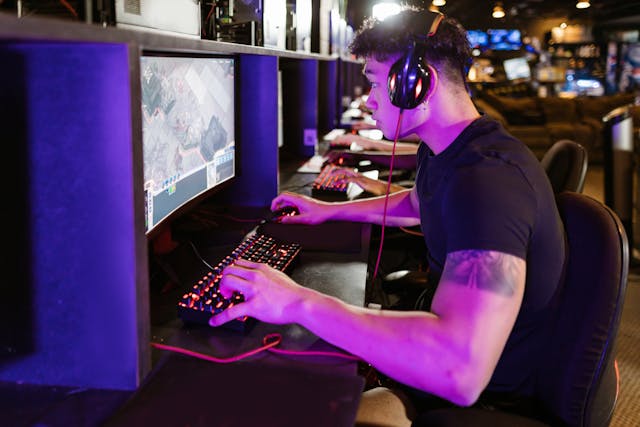
TrustnPlay.com is the destination for anyone who wants the best online casino experience. If you’re a newcomer or have played for a long time, TrustnPlay has got you covered. They are the go-to guide for anyone who needs access to credible and detailed information about the online gaming world.
This gaming guide is on a mission to empower users with the knowledge to make informed choices. They intend to achieve this by providing unbiased and comprehensive reviews of online casinos. They mostly explore their distinct features, strengths, and weaknesses.
Their analyses are different from what you’ll find online. All their analyses are conducted by industry experts who regularly provide professional insights for users worldwide.
TrustnPlay.com is home to reviews and guides on several exciting games, bonuses, and promotions. By digesting the information they provide, users can make informed decisions about their activities in the online casino world.
Anyone who uses this platform will always stay ahead of the curve! They keep updating their platform with expert strategies, tips and offers for users to win big. Also, they operate an open-door policy, as the community is open to everyone to improve their online gaming experience.
Features of TrustnPlay.com
TrustnPlay.com is a trusted platform where users can access credible best online casino reviews USA and the online gambling space.
Here are some of the features they offer:
Comprehensive Guides to Casino Games
Over time, TrustnPlay platform has been enriched with in-depth guides that help you familiarize yourself with your favorite casino games. Irrespective of your interests, you’ll find their guides helpful as they reveal hidden insights, strategies, and tips to improve your gaming skills, boosting your chances of winning.
User-Friendly Interface
TrustnPlay boasts an intuitive and clean interface that is easy to navigate. If you’re using this gambling guide for the first time, you will find it easy to access the tools on the platform. They have an organized layout and an efficient search function. The platform is optimized to function on all devices—mobile phones, tablets, and laptops. You can enjoy the same seamless experience on your preferred device at any location.
Easy Registration Process
It is fast and easy for anyone to create an account with TrustnPlay.com. With their simplified registration process, users can sign up and access lots of content on the platform. Users can participate in the community and get recommendations from other users on the platform.
Latest Industry Updates
With this platform, users can stay informed with their updated news on the casino industry. The platform’s editorial team works round the clock to inform registered users on emerging technologies and trends, regulatory changes, and gambling resources.
Editorial View and Community Engagement
TrustnPlay.com is passionate about making a good name for themselves, and it begins with cross checking the type of content they publish. They’re committed to providing unbiased, accurate and informative content to guide users’ decisions. TrustnPlay offers readers transparent and credible insights into different aspects of the casino industry. For each casino review, there are some criteria that help conduct a fair and equal assessment that improves the audience’s overall experience.
They boast an interactive and vibrant community where every new player can feel welcome. Each conversation is always meaningful and insightful. Here, you’ll find players sharing their experiences and seeking advice from other enthusiasts. TrustnPlay ensures that all interactions are closely monitored to fish out fraudulent individuals. So, if you have any questions about a particular casino or game or you need recommendations, the community has got you covered.
Through the community feature, users are allowed to connect with each other in real-time. They can even get access to the support team within a short time and get answers to their questions. Ultimately, the community feature ensures that users are never alone in their online gaming journey.
Tools and Resources for Players
TrustnPlay.com offers a wide range of tools and resources that improve players’ gaming experience and empower them to make better decisions. They provide users with betting guides that cover a wide range of topics, catering to the needs of beginners and professionals alike. These guides contain techniques and instructions for players to improve their mastery of casino games.
There are resources for games like roulette, slots, blackjack, etc. These resources help players stay ahead with news updates. You’ll find the latest developments and news in the online casino industry. With the news updates, players can stay informed and make decisions on the online casino to use and how to play. TrustnPlay.com is never short of expert insights on the best mobile online casinos. You can access professional insights and analysis that offer smart and distinct perspectives to increase your chances of success.
Their resources are designed to empower players with knowledge to understand how the online casino world works. When users have access to the latest trends and news, they can leverage opportunities and learn how to avoid possible pitfalls. This empowerment leads to a satisfying gaming experience because players will feel in charge and confident in achieving their gaming goals.
Standing Out in a Crowded Arena: What Makes TrustnPlay.com Unique
TrustnPlay.com comes with unique offerings that other online casino guides don’t have. Here are some of them
Highlighting Responsible Gambling
TrustnPlay is committed to promoting responsible gambling and ensuring it is done responsibly. They offer players several resources that guide them toward responsible gambling. By providing limit-setting features and assessment tools, players can gamble responsibly without attracting any disciplinary measures or developing a gambling addiction.
User-Centric Approach
The needs of every player are at the core of every service they provide. They are designed to cater to the needs of every user, ensuring they have a seamless experience. So, regardless of what you’re searching for like game guides, industry news, and the best online casino reviews USA, you’ll find everything on this platform. They take feedback very seriously. They listen to what users are saying, and use their feedback to implement more features and meet the needs of everyone.
Updated and Accurate Information
Information is very critical in the online casino world. But, updated information is more essential. TrustnPlay works tirelessly to provide users with updated and accurate information that highlights the latest trends and developments in the casino space. Their dedication to providing accurate and updated information helps players make well-informed decisions.
Exclusive Bonuses, Promotions and Payment Methods
TrustnPlay.com regularly provides players with updates on special bonuses and promotions that most people may not hear about. These exclusive promotions often include free spins, VIP and loyalty rewards, and welcome bonuses. They also inform players on the best online casino payment methods that works for their location.
Your Trusted Guide in the World of Online Gaming
TrustnPlay’s loyalty is to users interested in making something for themselves in the online casino world. They’re committed to providing a user-friendly and robust platform with accurate casino reviews, updated industry news and detailed game guides. Their dedication to excellence and exceptional online gambling offerings sets them apart from other platforms. This platform is positioned to support players and improve their online gaming journey.
-

 Guides4 years ago
Guides4 years ago6 Proven Ways to Get more Instagram Likes on your Business Account
-

 Mainstream9 years ago
Mainstream9 years agoBioWare: Mass Effect 4 to Benefit From Dropping Last-Gen, Will Not Share Template With Dragon Age: Inquisition
-

 Casual8 months ago
Casual8 months ago8 Ways to Fix Over-Extrusion and Under-Extrusion in 3D Printing
-
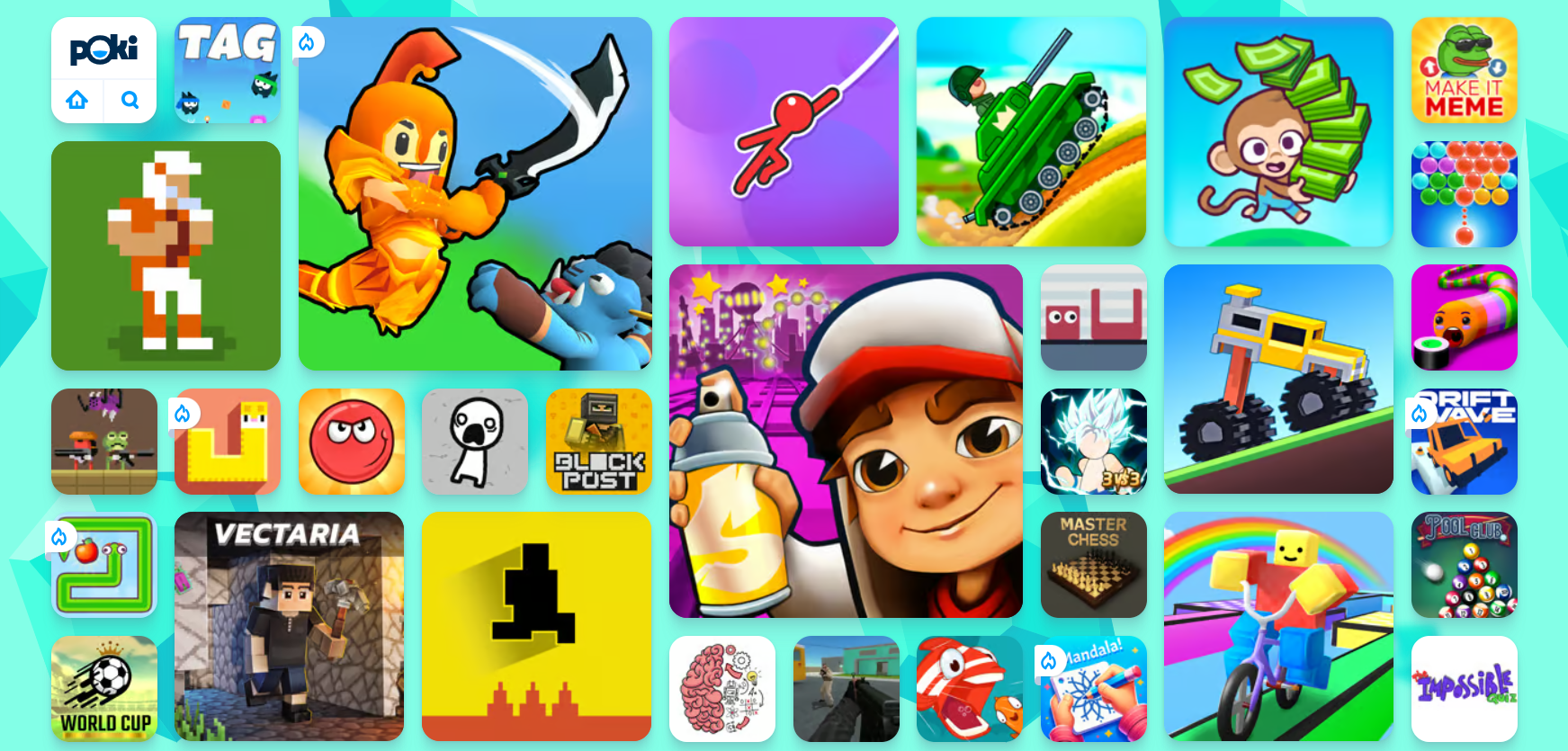
 Guides5 months ago
Guides5 months agoExplore 15 Most Popular Poki Games
-
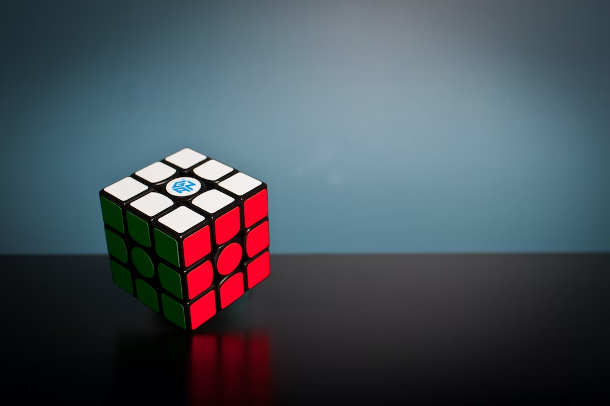
 Guides1 year ago
Guides1 year agoGan Rubik’s Cube vs. Traditional Rubik’s Cube: Key Differences and Advantages
-

 Uncategorized3 years ago
Uncategorized3 years agoTips To Compose a Technical Essay
-

 iOS Games1 year ago
iOS Games1 year agoThe Benefits of Mobile Apps for Gaming: How They Enhance the Gaming Experience
-

 Mainstream11 years ago
Mainstream11 years agoGuild Wars 2: The eSports Dream and the sPvP Tragedy

